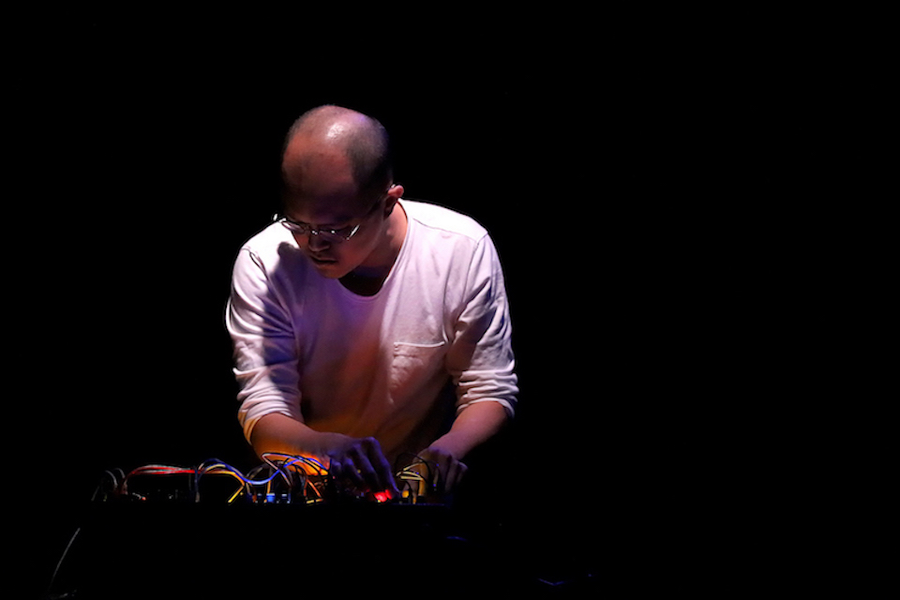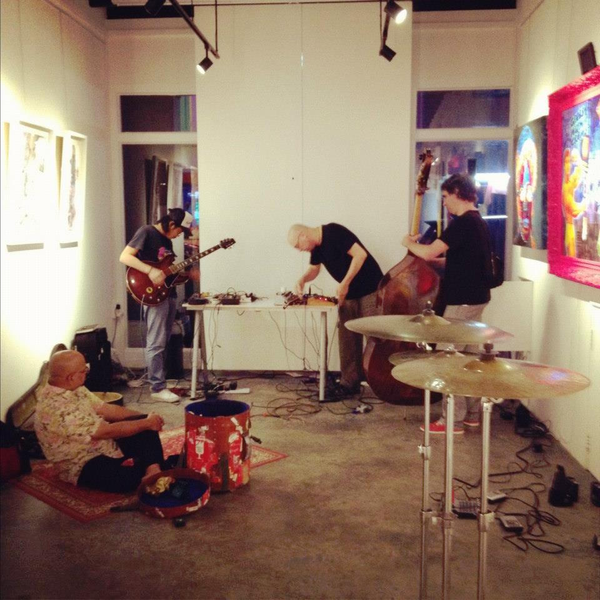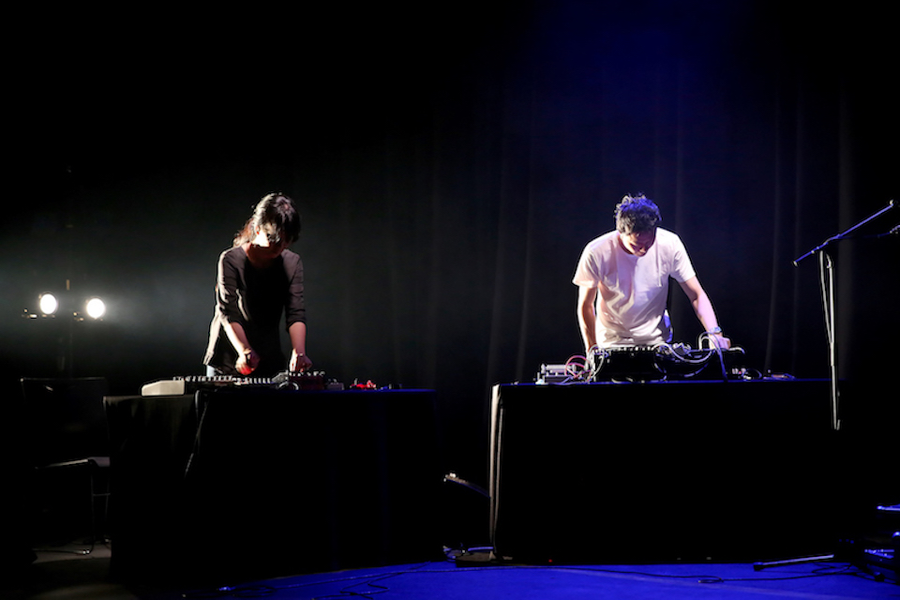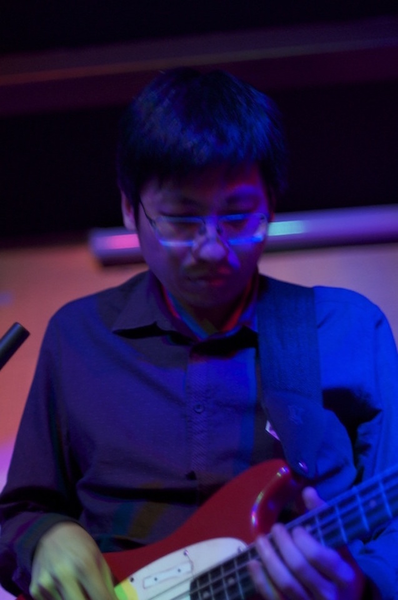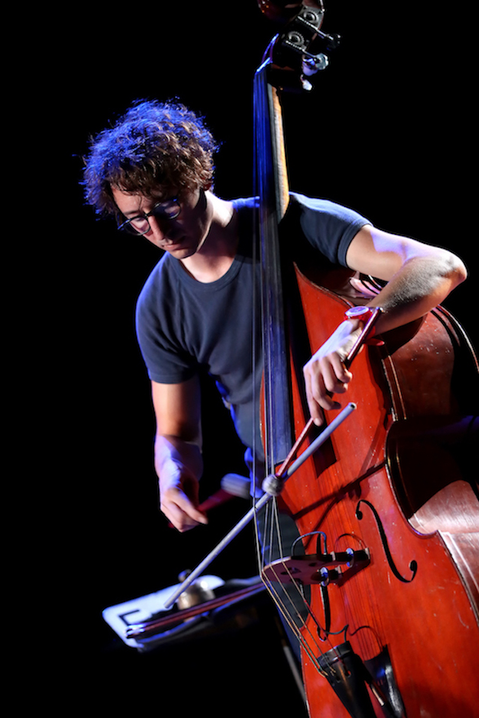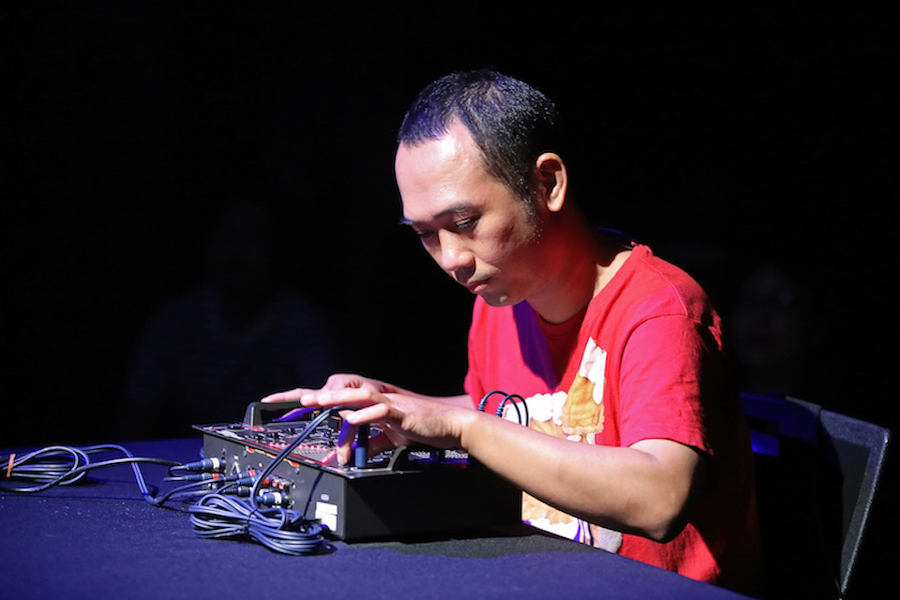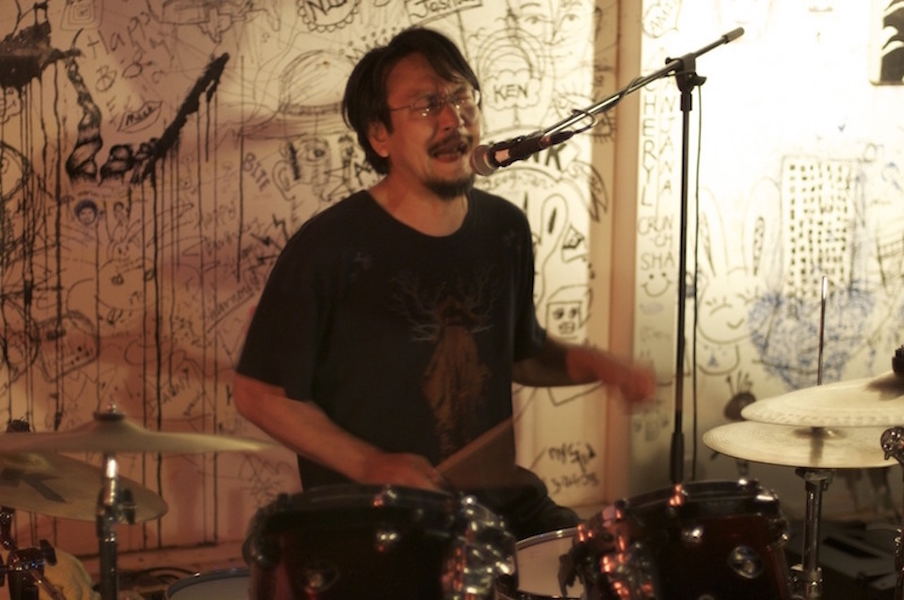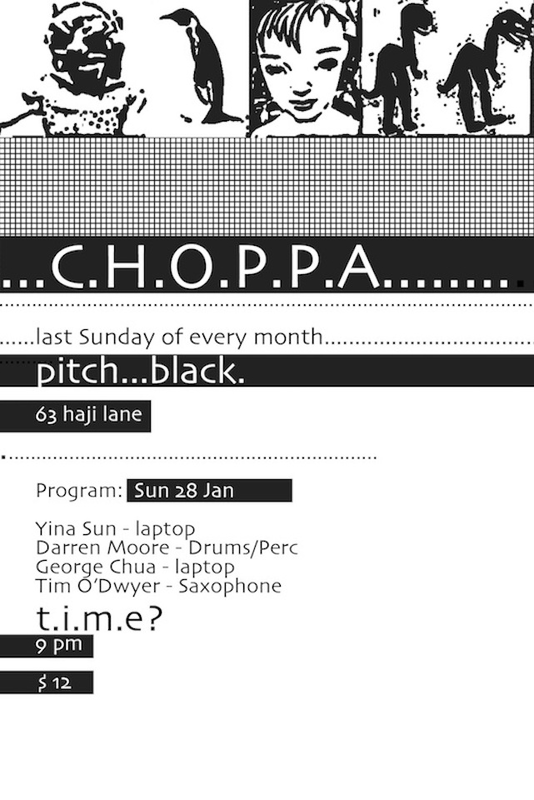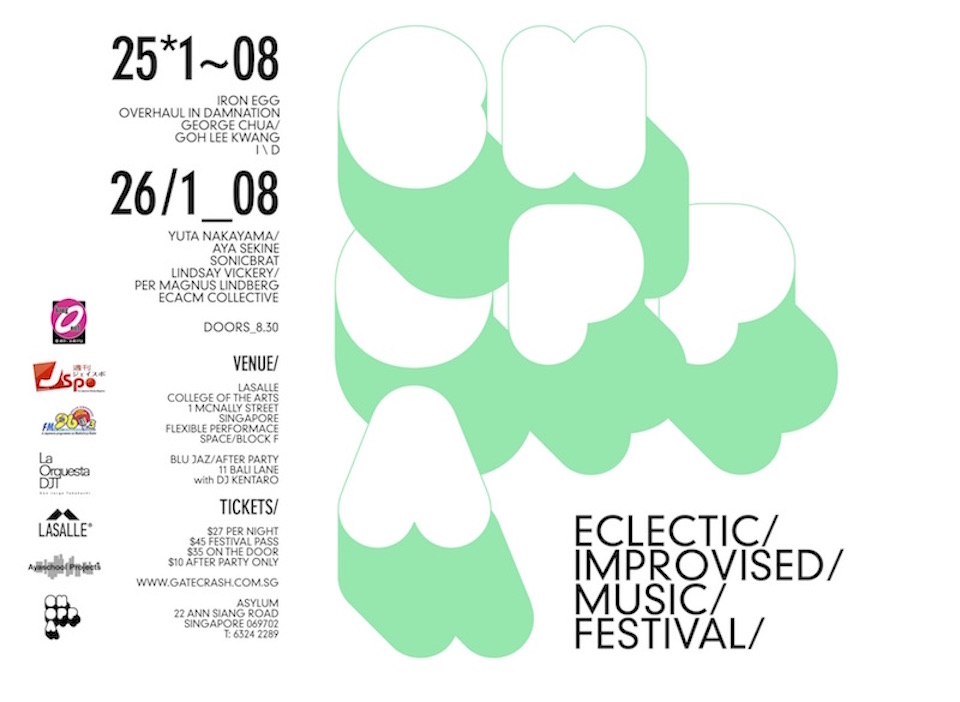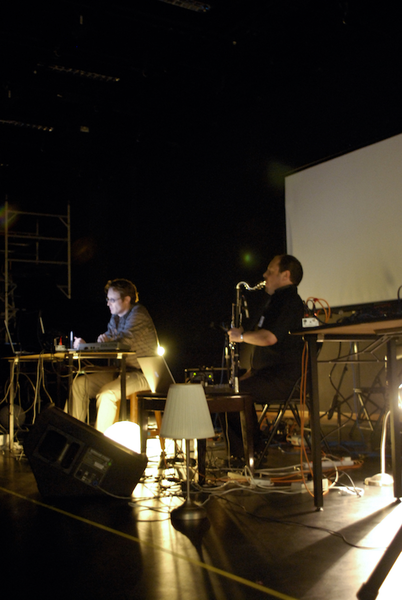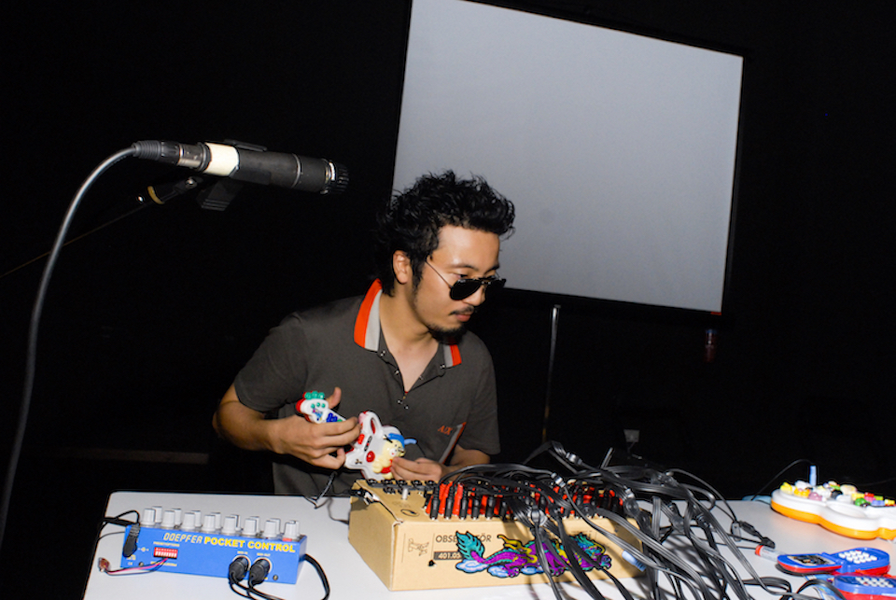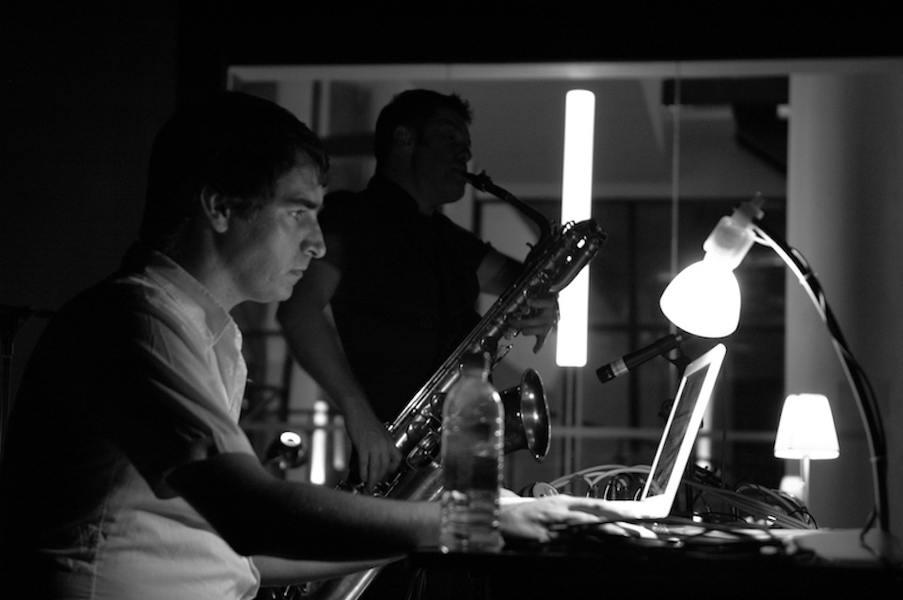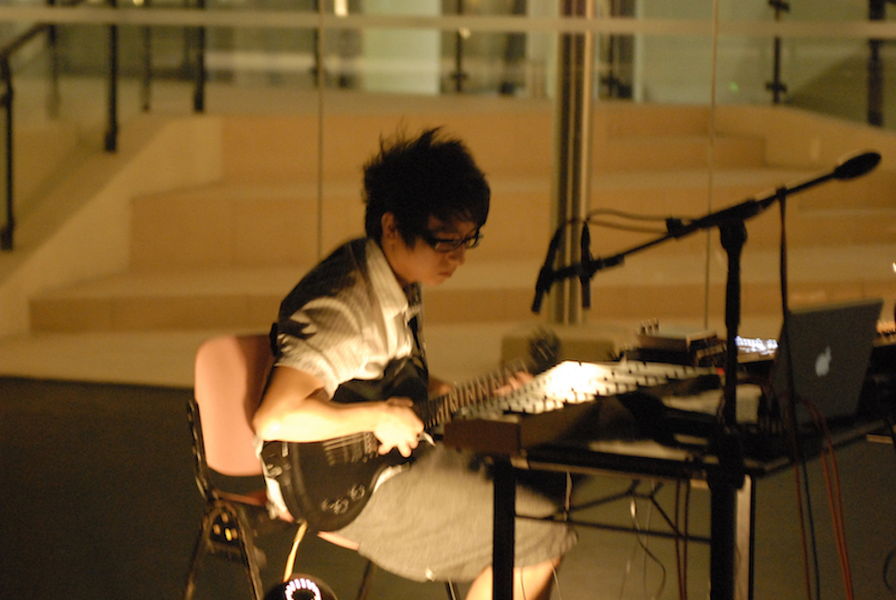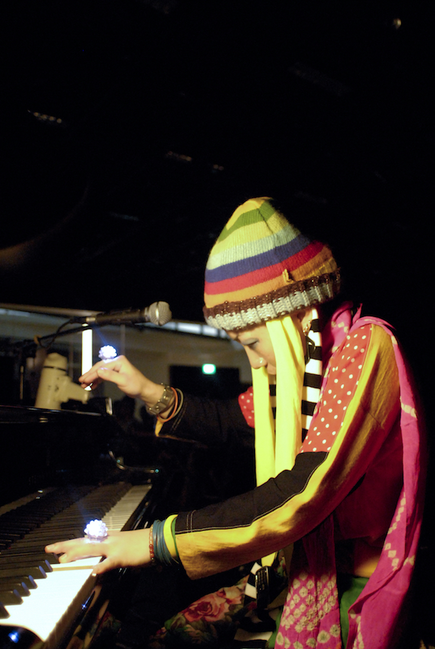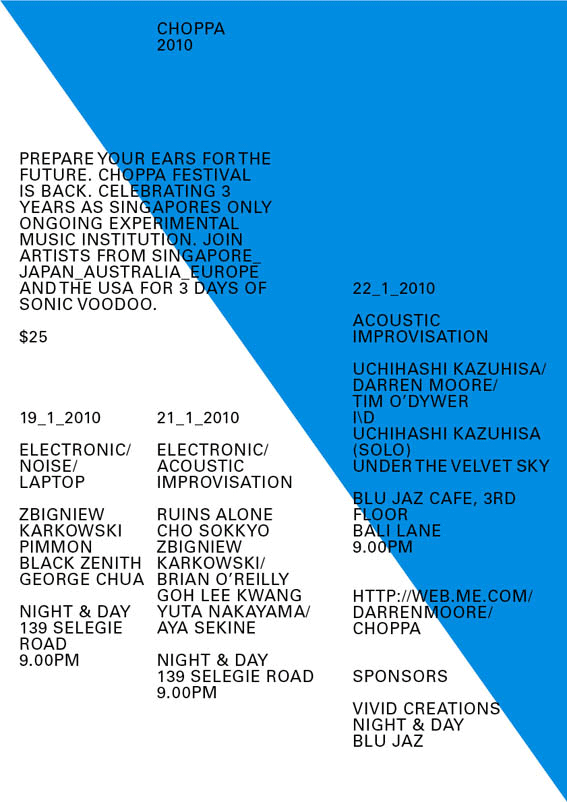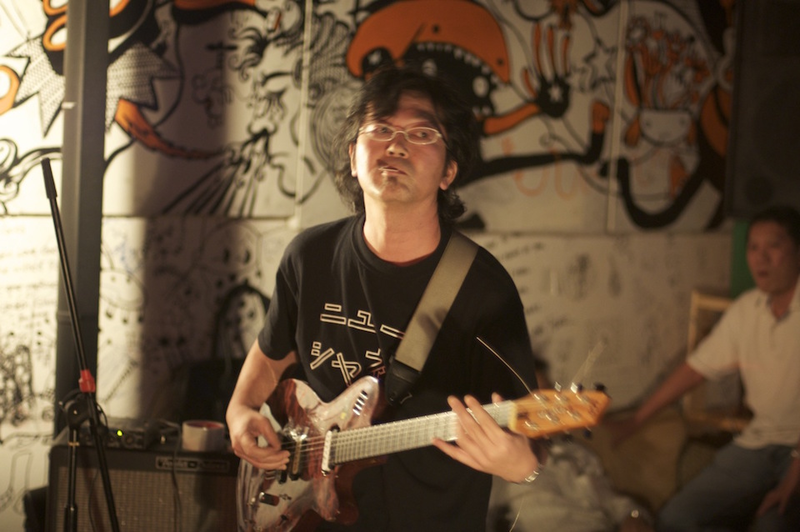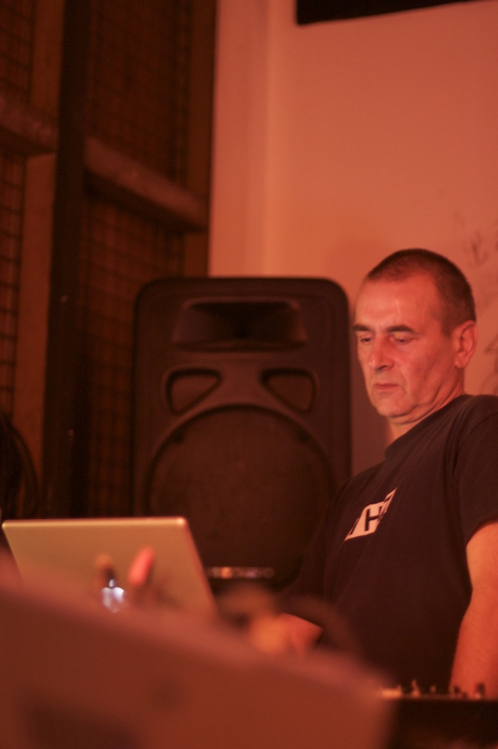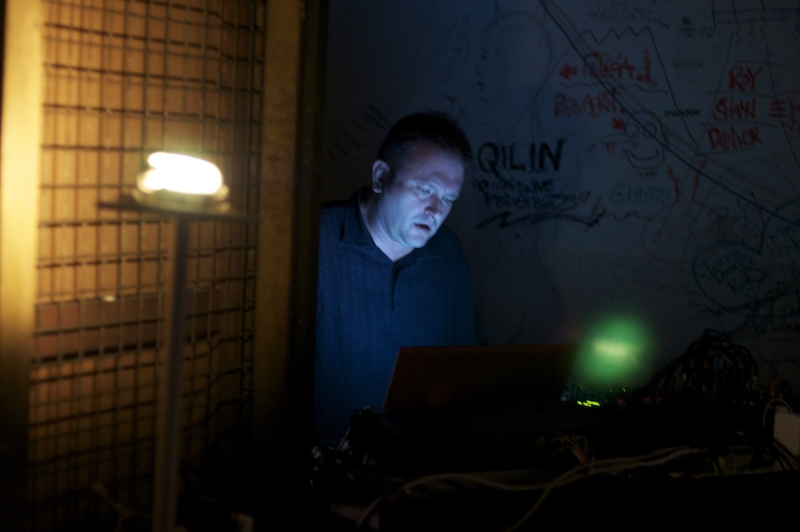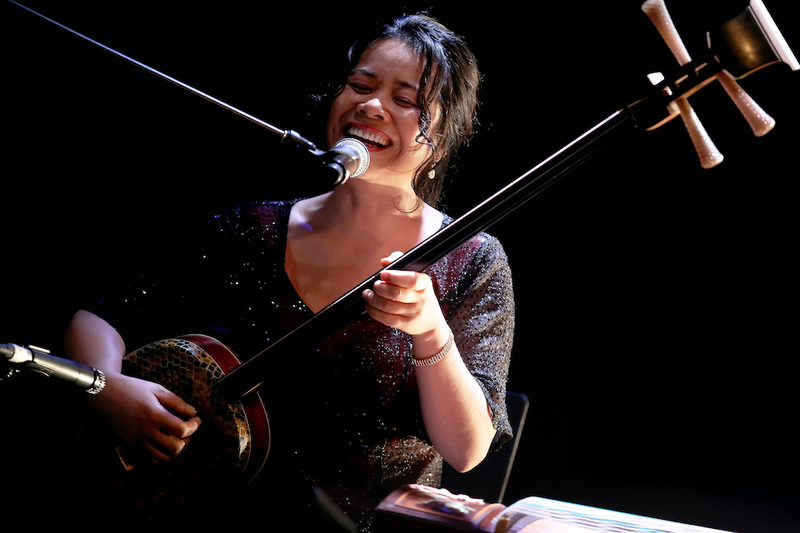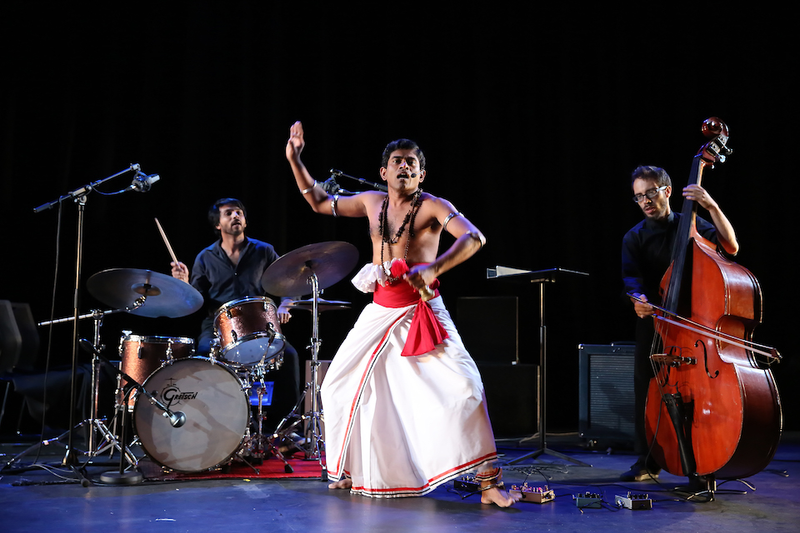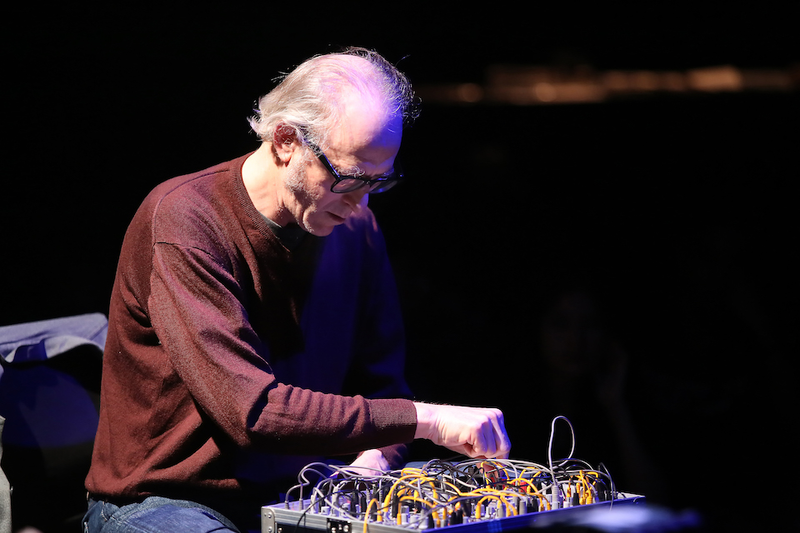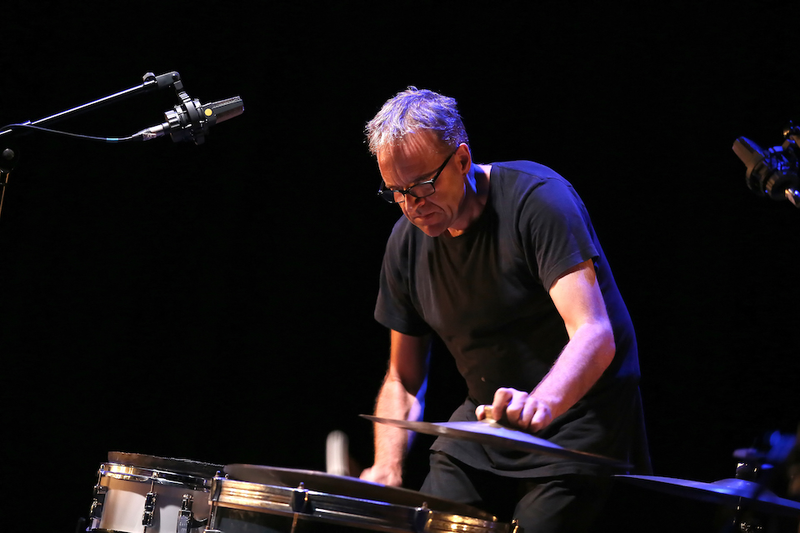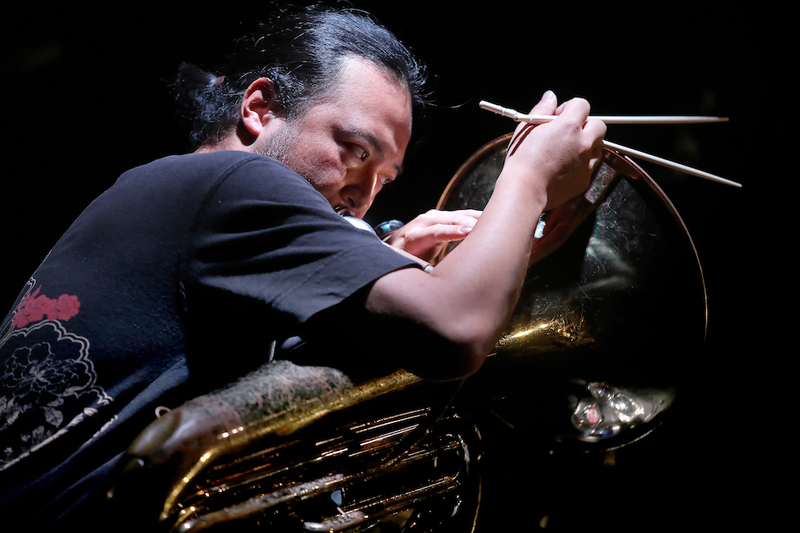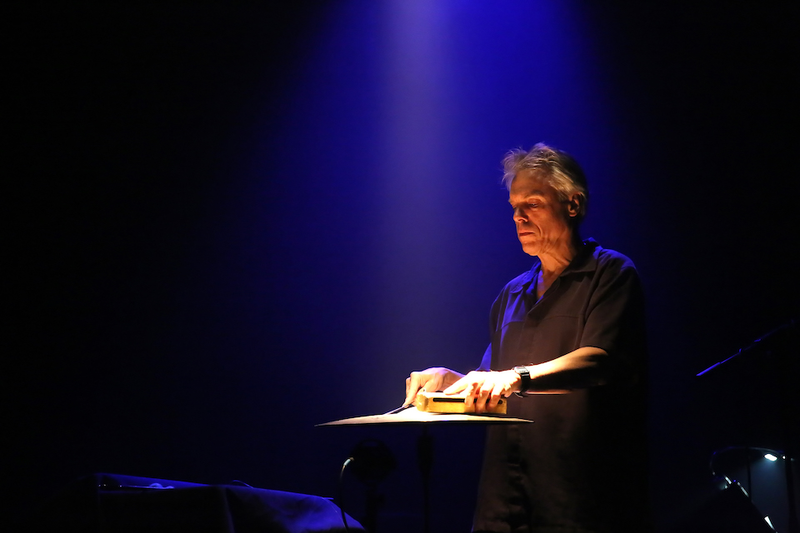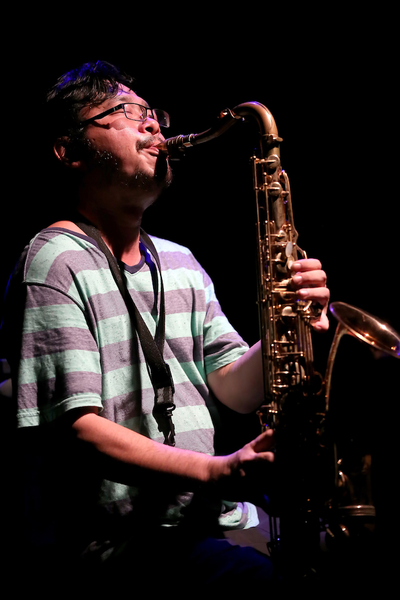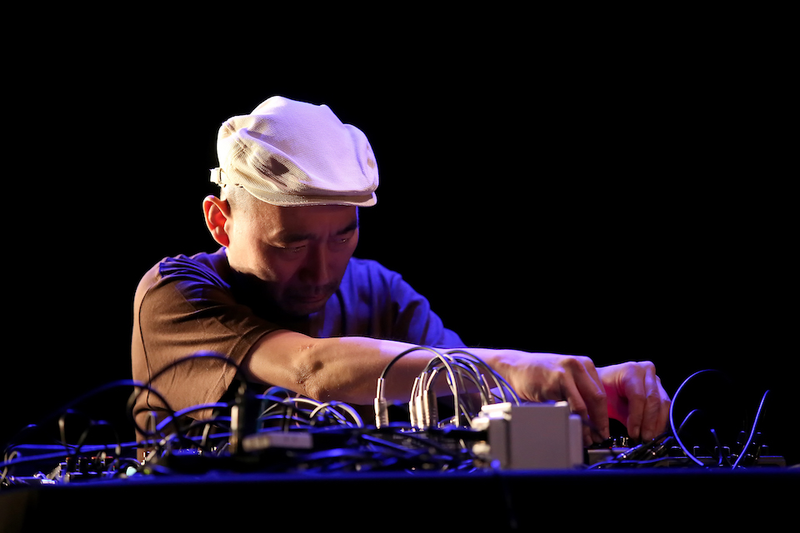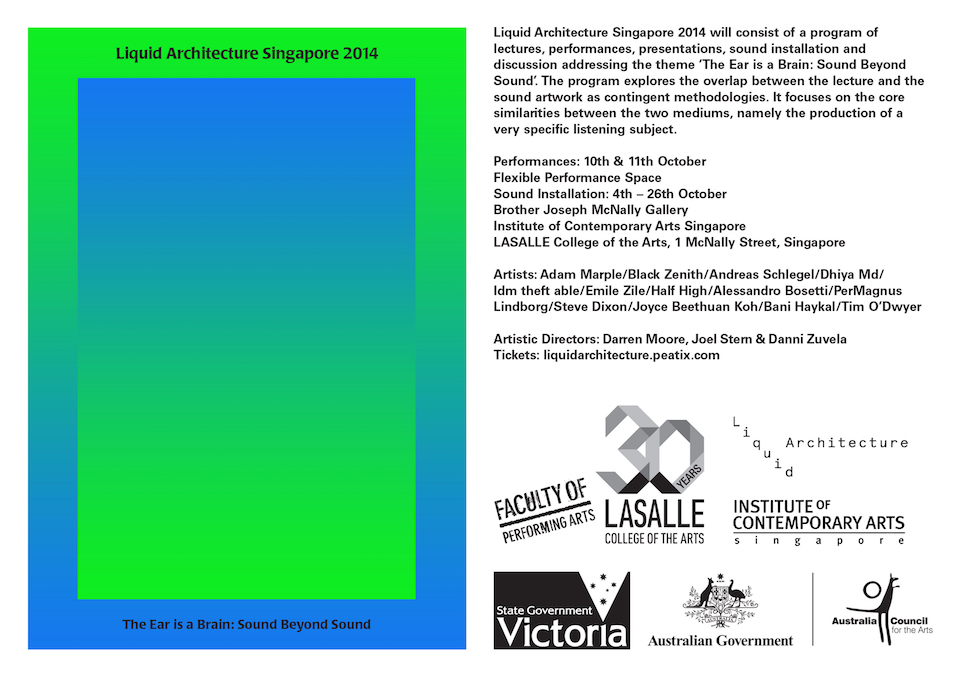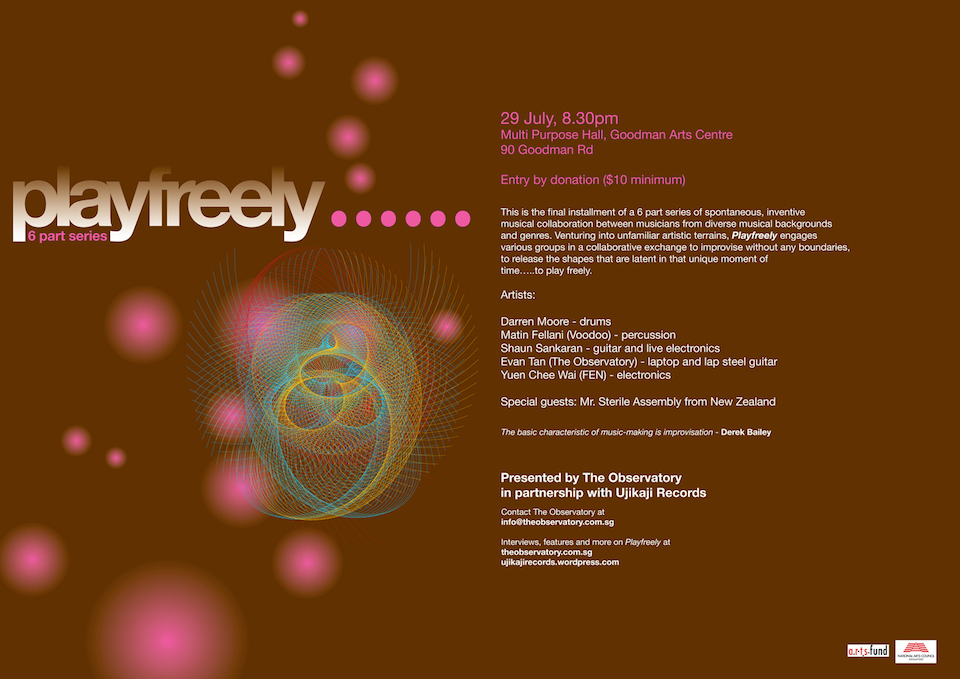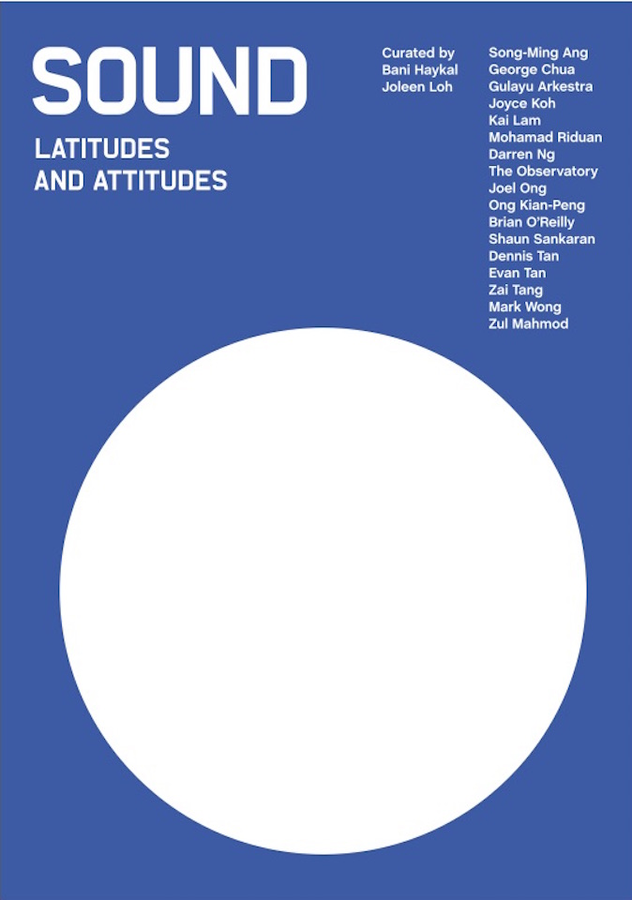Experimental Music in Singapore
Darren Moore
Introduction
The experimental music scene in Singapore emerged in 1990s and grew out of the underground rock music scene of the 1980s. In this sense, the experimental scene has a shared history with the development of popular music in Singapore that occurred concurrently with Western popular music movements. Over the past 20 years, the scene has gained momentum and developed into a small, yet vibrant community. Similar underground experimental music scenes have also emerged throughout South-East Asia, e.g., in Kuala Lumpur, Hanoi, Ho Chi Minh City, Bangkok, Yogyakarta, Jakarta and other major centers, which has led to an increase in experimental musical activity in the region.
This paper is a reflective account of the experimental music scene in Singapore that weaves a narrative of my activities and associations as a musician, event organizer, and academic. I lived in Singapore from mid-2006 to mid-2015 where I worked at LASALLE College of the Arts as a Lecturer in Popular Music. During this period I was an active participant in the jazz and experimental music scenes as a drummer and electronic musician. I organized many experimental music performances, including three festivals in 2008, 2010 and 2015 under the name of C.H.O.P.P.A.. It was during these activities that I came in contact with most of the people discussed in this paper, many of whom were either colleagues, friends or acquaintances. The experimental music activities discussed relate to live performances by practitioners who use either acoustic instruments, electronics, computers or any combination of these in a predominantly improvised setting.
In addition to detailing my own experiences, I will be drawing upon interviews, online resources, and relevant literature on the topic. To date there is no definitive written history of the experimental music scene in Singapore, and the topic remains relatively undocumented, with a few exceptions (Tham 2009; Lindborg 2014). Although this paper does provide an overview of experimental music activity over the past 20 years, it does not attempt to be a definitive history; instead, it relates a personal narrative that can contribute towards documentation in this area and hopefully encourage further investigation. This paper will first address how changes in government cultural policy have impacted the arts in Singapore and highlight key performance venues before tracing the early development of the experimental scene through the 1980s and into the 1990s. The decade of activity from the mid-1990s to the mid-2000s – which saw the emergence of some of Singapore’s first dedicated experimental musicians – will then be discussed, before finally outlining my own organizational activities and other events that took place from the mid-2000s to 2015.
Cultural Policy
Singapore’s development into an economic powerhouse since independence from Britain in 1959 has transformed it culturally, economically, socially, and politically. Government cultural policy established after independence focused on fostering nation building and included three key objectives; “[1] creating a sense of national identity among the various races,[2] eliminating communal divisions and social antagonisms, and [3] enhancing the capabilities of the mass media so as ‘to transform the people’s understanding of themselves and the country’" (Ng 2010: 302 as cited in Zubillaga-Pow 2014: 203). The government sought to achieve social cohesion through these objectives and was not tolerant of anything that threatened the accomplishment of these goals.
The decade that followed after Jek Yuan Thong became the Minister of Culture in 1968 saw some of the most radical governance and implementation of policies with regard to culture “to promote Asian art and values as ‘cultural ballast’ against ‘Western decadence’" (Zubillaga-Pow 2014: 205). Popular rock ’n’ roll was specifically targeted in the period from the late 1960s to the end of the 1970s as representing “Western decadence” due to its association with sex and drugs. Deemed “yellow culture,” Western rock was perceived to threaten the very fabric of society. The government policies that promoted Asian values of hard work, social stability, responsibility, morality, and community also led to “massive social engineering campaigns, government-controlled mass media and laws to keep public behavior and potential dissent under control" (Lockard 1998: 233). From the 1960s through the 1980s, various social, workplace, environmental, road safety, and public health campaigns were implemented by the government. The banning of local dialects on national radio and television – in favor of the officially recognized languages of Mandarin, Tamil, Malay, and English – was particularly detrimental to pluralism in Singapore. Anyone who challenged the government and its policies faced law suits, harassment, and even incarnation – a threat that still exists today, although there has been a relaxing of the enforcement of these policies in recent years.
Set against this backdrop, the popular music scene in Singapore suffered greatly throughout the 1970s, with many of the venues and bars associated with “decadent” Western culture either being closed down by the authorities or not being able to renew their entertainment licenses. These policies reached well into the 1980s, resulting in a declining music scene. However, the end of the 1980s saw a major shift in attitude towards the arts as the authorities began to regard the potential of the arts as a growth area. After achieving many of their socio-political and economic objectives, the government sought to establish a cultural superstructure that could support Singapore becoming an international arts hub. This led to the reevaluation of cultural policy and to the establishment of the National Arts Council (NAC) in 1991, culminating in the Renaissance City Plan (RCP) launched in 2000 by the Ministry of Information, Communication and the Arts.
The vision for the RCP was "to transform Singapore into a distinctive global city for the arts" and signaled the state recognition of the arts as integral to developing a culturally vibrant society. The plan was unprecedented in its scope and included a broad-based approach for the development and sustainability of the arts through educational and outreach programs, institutional support, funding for arts companies and artists, new arts spaces, galleries, performance venues, theaters, art schools, scholarships, as well as funding for major festivals and arts events. By 2012, after achieving many of the initiatives put forward by the RCP, the government announced it would spend a further SGD$ 274 million over the next five years to further nurture the arts (Tan 2015).
The experimental music scene finds itself on middle ground with regard to the impact of the state funding. As an art form operating on the fringes, much of the activity is independently produced, yet the scene has been affected by many practitioners being direct recipients of funding, through funding for larger scale events and festivals, and through support for arts venues or institutions that host experimental music events. In addition, many foreign academics involved in experimental music came to Singapore as a consequence of the government’s arts educational policy. Music and sound arts programs at institutions such as LASALLE College of the Arts, School of the Arts Singapore (SOTA), The School of Art, Design and Media (ADM) at Nanyang Technological University, Yong Siew Toh at National University of Singapore as well as Singapore Polytechnic and Republic Polytechnic have incorporated experimental music practices as part of their pedagogical approaches.
With many of the goals of the RCP to develop a cultural superstructure achieved, it is still debatable whether or not the arts community has had enough time to mature in order to sustain the structure. Although the effects of the RCP have benefitted a number of Singaporean experimental musicians and contributed towards an increase of activity in the past 10 years, attitudes towards the government within the community are often critical, especially in regard to censorship. On the other hand, many artists are ambivalent due to a belief that there is little they can do to change the status quo. In an interview on January 30, 2016, George Chua[1] pointed out that many musicians view receiving government funding as simply “playing the game” or, in other words, a means to achieving their artistic goals and objectives. It appears most artists are receptive towards the opportunities that state funding can provide, yet for some there is somewhat of an existential dilemma between wanting to remain independent and having to deal with the harsh financial realities of pursuing a career in the arts in a country with such a high cost of living.
[1] Chua, George and Yuen Chee Wai (personal communication, January 30, 2016).
Venues
The majority of experimental music activities in Singapore typically occur at either music venues, art galleries or art schools. Founded in 1990, The Substation is Singapore’s first independent contemporary arts center and has been one of the longest-standing supporters of research, experimentation, and innovation in the arts. The Substation has hosted numerous exhibitions, concerts, theatre productions, dance shows, and festivals. Night and Day Bar and Gallery, where the majority of performances for the C. H. O. P. P. A. series occurred from 2008-2013, has also played a significant part in supporting experimental music. Founded by designer Kelley Cheng and architect Randy Chan in 2007, the 1950s art-deco building housed Cheng and Chan’s work offices, a bar, and a gallery space providing a platform for emerging artists and experimental practices. In an all-too-common pattern, the venue closed in 2013 due to a sudden tripling of the rent. From mid-2000s to mid-2010s, rents increased between two hundred to three hundred percent, creating an increasingly challenging environment for sustaining artistic practices.
Figure 2. 2008 C. H. O. P. P. A. Festival Audience at Night and Day Bar and Gallery.
Venues such as Blu Jaz Cafe, Gillman Barracks, ArtScience Museum, and LASALLE College of the Arts continue to occasionally host experimental music nights, but other smaller independent venues such as Crawlspace, Blackhole212, Pink Noize, and The Pigeon Hole that have supported underground music in the past have all closed in the last ten years due to not being able to sustain the high rental costs. In 2014 a new gallery, bar and café space called Artistry opened, filling the gap left by Night and Day. Established by artist, designer, and musician Marcel Heijnen as a space to promote and sustain the arts, Artistry has been a great supporter of not only experimental music but of all forms of emerging art forms.
Figure 3. C. H. O. P. P. A. event at Artistry, 2012.
Emergence of the Scene
One of the first bands credited with ushering in the Singaporean underground music scene was art-rock group Zircon Lounge, led by Chris Ho (now referred to as X’Ho). The group, often compared to the Velvet Underground, released one album on WEA records, called Regal Vigor (1983). The release was not a commercial success, but it has since been considered a landmark recording that helped to bridge the gap between the rock scene of the 1970s and the 1990s underground music scene. In addition, Ho’s influence as a DJ on the cable station Rediffusion, along with the influence of the independent music magazine BigO (named after the Who’s song "Before I Get Old"), had an impact on the Singaporean underground music scene in the 1980s and early 1990s, inspiring the next generation of musicians and paving the way for the development of experimentalism.
The 1990s in Singapore saw a hotbed of alternative, non-mainstream activity, in particular with indie, grunge, punk, industrial, metal, and hardcore music. This period saw the establishment of some of the first dedicated experimental musicians in Singapore, most of whom are still active today. This pioneering group of musicians included George Chua, Evan Tan, Yuen Chee Wai, Leslie Low, Vivian Wang, Harold Seah, Joseph Tham, Ian Woo, and Kelvin Tan. The musicians came from a range of backgrounds and were influenced by the 1980s and 1990s underground rock scene in Singapore as well as by record labels such as Touch, Mego, Improvised Music from Japan, and publications such as the Wire Magazine.
Figure 5. Ian Woo performing with I\D at the 2010 C. H. O. P. P. A. Festival.
The interaction with touring experimental musicians was also influential, in particular with musicians from Japan and Norway. Japan, with a long-established experimental tradition, provided an Asian counterpoint for Singapore to the influence of the European and US experimental music scenes. Japanese musician Otomo Yoshihide, whose early visits included being involved in the Theatreworks "Flying Circus” project, influenced many of the aforementioned musicians with his experimental turntable and guitar work. Otomo was one of the first well-known experimental artists to make frequent visits to Singapore, which contributed to building a stable relationship between the Singaporean and Japanese experimental music scenes.
The Norwegian noise and experimental scene was also influential due to frequent visits, from the early 2000s, to Singapore by key players in that scene. This relationship was established when Yuen Chee Wai was approached by Low Kee Hong from Theatreworks to put together a group of experimental musicians for a new project. Yuen contacted the Oslo-based record label Smalltown Supersound and invited John Hegre, Jørgen Træen, Lasse Marhaug, and Alexander Rishaug to Singapore, all of whom made subsequent visits to Singapore for various performances. Yuen also introduced the members of the Singaporean post-rock band The Observatory to Jørgen Træen, who produced their second album Blank Walls (2005). This relationship continued with Træen producing their three subsequent albums: A Far Cry From Here (2007), Dark Folk (2009), and Catacombs (2012).
Harold Seah and Joseph Tham, who ran the experimental music record store Flux Us between 2005-2007, were important figures in the development of the scene, both as musicians and as conduits of information. George Chua and Yuen Chee Wai[2] both claim that Seah was often the person to introduce the latest experimental music from overseas to the members of the scene. Tham is also influential as a writer and has published many essays on Singapore's popular and experimental scenes, several of which are available on his blog.
One of the first experimental music series in Singapore was called “Strategies,“ organized by George Chua over 2002 and 2003. The events occurred at the Substation, with the inaugural performance featuring Chua, Yuen Chee Wai, and Evan Tan in a small space called the Random Room with only several people in attendance. Similarly sized experimental events also occurred at the Flux Us record store during its operational years, featuring many of the aforementioned Singaporean musicians, resident foreign musicians, and international touring musicians from Europe, Australia, and South-East Asia, such as Lawrence English from Australia and Goh Lee Kwang from Malaysia.
[2] Chua, George and Yuen Chee Wai (personal communication, January 30, 2016)
Figure 6. Goh Lee Kwang performing at the 2015 C. H. O. P. P. A. Festival.
In 2005, one of the longest experimental performances to be held in Singapore was a 24-hour event called UnaVoce held at the Substation. The event featured a large majority of the previously mentioned local musicians as well as Chong Li Chuan, Zai Kuning, Ang Song Ming and Koichi Shimizu. Zai Kuning – who was better known in the Singaporean art scene at that time as a performance artist, visual artist, theatre performer, and dancer – began exploring more experimental approaches to music around this period. Another participant worth mentioning is the Bangkok-based, Japanese musician Koichi Shimizu, who has been an important figure in the Bangkok experimental music scene since he moved there in 2003. Shimizu is the founder of the So:On Dry Flower record label and collective and has been responsible for organizing many experimental music performances in Bangkok over the last 10 years. His frequent visits to Singapore since the mid-2000s has made him an important link between the Singapore and Bangkok scenes. One month after UnaVoce 2005, an event entitled Hung at Dawn that protested against the implementation of the death penalty in South East Asia was held at the Substation. The event featured many of the same musicians who performed at UnaVoce with a noteworthy addition of electronic noise musician One Man Nation, a.k.a. Tara Transitory, who was becoming active around this time and has since built a career, largely performing in Europe.
During 2006 and 2007, the three part Hadaka series initiated by Yuen Chee Wai was one of the first attempts to place experimental music practice in Singapore within a pan-Asian context. The series brought together musicians from East Asia and South-East Asia, commencing with Hadaka Cheld at the Singapore Art Museum in June 2006. The concert featured Yoshida Tatsuya, known for his work with the Japanese group Ruins, on drums and Hong Kong-based sound artist Dickson Dee, who runs the NoiseAsia label. Dee has been very active since the mid-1990s as a performer and organizer of experimental shows in Hong Kong and China. In recent years, noise artist Dennis Wong, aka Sin:Ned, has been producing a large proportion of experimental activity in Hong Kong as a co-founder of Re-Records, the Noise to Signal series, and Kill The Silence Festival.
Figure 7. Yoshida Tatsuya performing at the 2015 C. H. O. P. P. A. Festival.
The final installment of the series, Hadaka K, was the most ambitious concert, representing a snapshot of active Asian experimental practitioners during that period. Held at the Esplanade Studio Theatre in September 2007, the concert featured Singaporean artists Yuen, George Chua, and Zai Kuning together with Japanese artists Otomo Yoshihide and Atsuhiro Ito, Venzha Christiawan from Indonesia, Dickson Dee from Hong Kong, Jin Sang Tae from Korea, and composer Vu Nhat Tan from Vietnam.
The Hadaka K event shared many parallels with Otomo Yoshihide’s Ensembles Asia project. An ambitious project supported by the Japan Foundation, it aims to develop a network between Asian experimental practitioners operating on three fronts: the Asian Music Network, the Ensembles Asia Orchestra, and Asian Sounds Research. The Asian Music Network, which is curated by Yuen and Hong Kong-based Japanese musician Takuro Mizuta Lippit, aka DJ Sniff, “aims to identify key figures in an emerging Asian experimental and independent music scene, and cultivate a new collaborative network among musicians and organizers” (Asian Music Network). The Ensembles Asia Orchestra brings together participants from the network for a series of concerts at the Asian Meeting Festival, which have been held in 2015 and 2016. Asian Sounds Research, led by Japanese artist Sachiko M, also aims to foster an Asian artist network but focuses on location-based experimental research using music as a mode of expression.
C. H. O. P. P. A. Experimental Music Series
In January 2007, the C. H. O. P. P. A. Experimental Series was initiated with the goal to develop a community through creating a platform for musicians from varied backgrounds to explore new ideas and collaborate. The series developed into three festivals in 2008, 2010 and 2015 with the 2008 festival being the first festival in Singapore dedicated solely to experimental music. The series and 2008 festival was co-curated by Tim O’Dwyer and myself before I took over as the sole organizer in 2008.
Figure 8. Poster for the first C. H. O. P. P. A. series performance.
From 2008, the C. H. O. P. P. A. series changed its format from a monthly series to a more ad-hoc basis featuring local musicians and visiting international guests such as Robin Fox, Uchihashi Kazuhisa, Toshimaru Nakamura, David Toop, and Mike Cooper. During my involvement in the Melbourne and Sydney experimental music scenes before moving to Singapore, I had observed that there was a great emphasis placed on the development of a community around experimental music. In particular, I was influenced by the organizational model and curatorial approach of Clayton Thomas and Clare Cooper who founded the NOW now series and annual festival in 2001 in Sydney. The NOW now operated from the standpoint of nurturing a community of improvisers that was open and exploratory in nature through a grassroots, artist-run approach of self-organized, self-produced, and self-promoted concerts.
C. H. O. P. P. A. Experimental Music Festival
The 2008 C. H. O. P. P. A. Experimental Music Festival was held at LASALLE College of the Arts and aimed to raise awareness about experimental music in Singapore and to strengthen ties between the Singapore and Malaysian experimental music scenes. The festival featuredmusicians from a range of backgrounds, including rock, jazz, contemporary classical, performance art, noise, and electronic music. The festival was well attended with audiences on both nights of the festival exceeding 100 people.
Figure 12. Lindsay Vickery and PerMagnus Lindborg performing at the 2008 C. H. O. P. P. A. Festival.
AudioObject 7: Lindsay Vickery and PerMagnus Lindborg performance at the 2008 C. H. O. P. P. A. Festival.
The festival was supported by LASALLE College of the Arts through the contribution of venue and equipment. Festival performers Lindsay Vickery, Tim O'Dwyer, and myself all worked in the music department at LASALLE, which has been an important institution in terms of support for the experimental music community in Singapore. Vickery, who was the Head of Music from 2004-2008, was responsible for leading the development of The School of Contemporary Music at LASALLE from a minor player in music education to becoming one of the more progressive music schools in Asia. Vickery hired O’Dwyer and myself, along with Brian O’Reilly and PerMagnus Lindborg, who have all contributed to the experimental music scene as performers and researchers. Vickery also initiated the New Directions Festival in 2004, an annual new music event at LASALLE that ran until 2008. Although small and predominantly composer-orientated, the festival did expose experimental music practices to the public and students.
The 2008 festival featured the Kuala Lumpur-based Experimental Musicians and Artists Co-operative Malaysia (ECACM), an independent organization dedicated to the facilitation, publication, and exposure of creative and experimental works from Malaysia and the South-East Asia region. Amongst the ECACM artists who have performed at the festival, Kok Siew Wai, Yong Yandsen, and Goh Lee Kwang have been the most proactive and have made the most impact on the Kuala Lumpur experimental music scene since the mid-2000s.
Figure 16. ECACM performing at the 2008 C. H. O. P. P. A. Festival.
Kok Siew Wai is an improvising vocalist, video artist, and independent artist-curator. Upon returning to Malaysia, following post-graduate film studies at the University of Buffalo in the USA in 2006, Kok initiated the alternate art-space SiCKL (Studio in Cheras, Kuala Lumpur), which hosted many ECACM activities between 2007 and 2010. In 2010, Kok founded the Kuala Lumpur Experimental Film and Video Festival (KLEX) which has since been Kuala Lumpur’s flagship annual experimental arts event, including not only film and video, but a music and installation program as well. KLEX has been important in actively connecting the international experimental arts communities in Asia and, more recently, Europe.
Along with Kok, tenor saxophone player Yong Yandsen is one of the few acoustic experimental improvisers in Kuala Lumpur. He has been active as a performer, in particular with his group Game of Patience, and as an organizer for the monthly experimental music series Serious Play Improv Lab (SPIL) which is a KLEX project focused on free improvisation. Since mid-2014, SPIL has been an important platform for experimental music in Kuala Lumpur, facilitating collaborations between regional and international performers from different backgrounds, as well as nurturing the next generation of Kuala Lumpur-based experimental musicians.
Goh Lee Kwangis an electronic musician and visual artist who has been very active as a performer and concert organizer in the Kuala Lumpur experimental art scene since the early 2000s. Goh is the founder of the Switch On series, which has hosted many events, including several mini-festivals, providing a platform for experimental arts in Kuala Lumpur. He runs the record label Herbal International, which is an experimental music label that releases CDs from European and Japanese artists as well as his own music.
The 2010 and 2015 C. H. O. P. P. A. festivals built upon the locally-focused approach of the 2008festival to become more inclusive of surrounding regions, such as Australia and East Asia, as well as Europe and the US. Highlights from the 2010 festival, which was held over three nights at Night and Day Bar and Blu Jaz Cafe, included Cho Sokkyou, a duo consisting of Japanese guitarist Uchihashi Kazuhisa (Ground Zero and Altered States) and drummer Tetsuya Yoshida, the late composer/noise musician Zbigniew Karkowski and a performance/installation from Singapore-based Japanese musicians Yuta Nakayama and Aya Sekine.
AudioObject 17: Zbigniew Karkowski, Brian O'Reilly performance at the 2010 C. H. O. P. P. A. Festival.
The next C. H. O. P. P. A. festival occurred in January 2015 and was presented in collaboration with the School of Contemporary Music at LASALLE. The festival was much more ambitious in its scope than the previous festivals, thanks to funding from LASALLE for artist fees, travel, accommodation, and production costs. In addition, being a school-based production, the festival engaged many students as sound engineers, arts managers, and production assistants.
The 3-day 2015 festival featured musicians from Asia, the US, Australia, and Europe with a mixture of first-time collaborations and established groups. Performances by Germany-based, Chinese musician Xu Feng Xia and Sri Lankan group Baliphonics stood out for their hybrid approaches, bringing together traditional and experimental music practices. Traditionally trained on the Guzheng, Xu Feng Xia combines traditional Chinese instrumental techniques and musical approaches with experimental vocals and extended techniques that developed through her interactions with free jazz and free improvisation musicians in Europe. Led by Sri Lankan drummer Sumudi Suraweera, Baliphonics present the music of the low-country Båli ritual tradition of Sri Lanka within a contemporary jazz and improvisational framework. With the Båli ritual currently facing extinction due to the impact of the modernization, the Baliphonics endeavor to keep the tradition alive through recontextualizing the music within a contemporary setting. Suraweera also founded the Musicmatters school in 2010, endeavoring to nurture creative music practices in Sri Lanka as an alternative to traditional exam-based music education. Music Matters also hosts the annual Musicmatters Festival in Colombo which aims to expose Sri Lankan audiences to a wide range of creative musical practices.
AudioObject 20: Uchihashi Kazuhisa, Tim O’Dwyer, Darren Moore performance at the 2010 C. H. O. P. P. A. Festival.
AudioObject 24: Burkhard Biens, Toshimaru Nakamura, Clayton Thomas performance at the 2015 C. H. O. P. P. A. Festival.
AudioObject 26: Brian O'Reilly, Anla Courtis, George Chua performance at the 2015 C. H. O. P. P. A. Festival.
AudioObject 32: Tim O'Dwyer, Clayton Thomas, Darren Moore performance at the 2015 C. H. O. P. P. A. Festival.
AudioObject 29: Tim O'Dwyer, Xu Feng Xia, Darren Moore performance at the 2015 C. H. O. P. P. A. Festival.
AudioObject 31: Toshimaru Nakamura, Jason Kahn, Goh Lee Kwang performance at the 2015 C. H. O. P. P. A. Festival.
Sonorous Durations
In 2011 and 2012, the School of Contemporary Music at LASALLE in collaboration with the Institute of Contemporary Art Singapore (ICAS) hosted the Sonorous Duration festival that featured sound installations and experimental music performances. The 2011 festival presented performances and installation works by, among others, Sachiko M, Yan Jun, Goh Lee Kwang, Robbie Avenaim from Australia, Tim O’Dwyer, Andreas Schlegel, Black Zenith, and a collaboration between Brian O’Reilly and Serbian artist Vladimir Todorovic. Rully Shabara and Wukir Suryadi, performing under the name of Senyawa, combined traditional Javanese and experimental music practices, representing a hybridized contemporary Asian music practice.
The 2012 festival followed the same format as the 2011 festival, with one of the highlights being a large scale installation by Robbie Avenaim in which small motors were used to automate cooking chopsticks suspended from the ceiling to strike a variety of percussion and found objects. Black Zenith exhibited an audio-visual piece, and Tim O'Dwyer presented an installation in collaboration with Serbian visual artist Igor Delic. Performers included Australian trumpeter and current artistic director of the Australian Art Orchestra Peter Knight, Dirk Stromberg, and two LASALLE music technology alumni, Jon He and Hector Lee. He has been an active experimental electronic musician since graduating from LASALLE in 2010, and Lee is currently teaching music technology at LASALLE.
Liquid Architecture Singapore 2014
Liquid Architecture Singapore was presented by the Faculty of Performing Arts at LASALLE in collaboration with Liquid Architecture Australia and the Institute of Contemporary Arts Singapore. Liquid Architecture is widely regarded as one of Australia’s leading sound art festivals and has brought together works across a range of disciplines to audiences in Melbourne, Sydney, Brisbane, Perth, and Singapore. It was the first time that the festival held a subsidiary event outside of Australia, reflecting the emerging dialogue between Australian and South-East Asian artistic practices.
Figure 31. Liquid Architecture Singapore 2014 poster.
The curation of Liquid Architecture Singapore was a collaboration between Artistic Directors Danni Zuvela and Joel Stern and myself. The festival addressed the theme "The Ear is a Brain: Sound Beyond Sound" through a series of performances, lectures, and sound installations. The 2014 festival marked a change in direction under the new curatorial team of Zuvela and Stern, who aimed to expand on the initial objectives of a “sense-specific” platform for the investigation and perception of sound, “to engage the social, cultural, political, economic, as well as aesthetic frameworks in which sound takes place” (Zuvela and Stern2014). Highlights curated by Zuvela and Stern included IDM Theft Able from the US, manipulating sound and speech on homemade apparatus, and Alessandro Bosetti from Italy, who presented an absurdist improvised dialogue with a pre-recorded other.
The curatorial approach that I took for the festival was to focus on presenting works that engaged with sound within multi-disciplinary environments. These works included the multidisciplinary Viewpoints, led by theatre director Adam Marple, who brought together an ensemble consisting of Andreas Schlegel and Dhiya Muhammad on interactive visuals, a hand-picked group of LASALLE College theatre alumni, and improvised electronics by Black Zenith. Viewpoints explored the application of the improvisatory technique called Viewpoints to a real-time multimedia environment. Steve Dixon, who is a performance artist, author, and President of LASALLE, presented an excerpt of his multimedia realization of T. S. Eliot’s poem The Wasteland in collaboration with Singaporean composer Joyce Beethuan Koh, and Singapore artist Bani Haykal was commissioned to create a sound installation work that engaged in a critical commentary about government cultural policy and the role of the arts in Singapore.
The Observatory, the SA Trio, and Playfreely
Since 2001, experimental post-rock band The Observatory has been one of the most enduring groups in the Singaporean underground music scene. Founding members Leslie Low and Vivian Wang have maintained a creative through-line since the group’s formation. Low has been the primary creative force in the group, weaving his distinctive guitar and vocal style throughout the many incarnations of the group. Wang has been the driving force behind the scenes, coordinating the group’s many tours, recordings, merchandise, and performances. The present lineup consists of Low on vocals and guitar and Wang on keyboards with Yuen Chee Wai on electronics and guitar, and Cheryl Ong on drums and percussion. A Chinese classically trained percussionist, Ong brings a unique approach to drum-set playing within the group, combining Chinese percussion and rock drumming. Ong is also percussionist for the SA Trio, a group with Andy Chia on dzi (Chinese flute) and Natalie Tse on guzheng (Chinese zither). The members of the SA Trio are all trained in Chinese classical music and combine traditional Chinese musical influences with electronics and experimental techniques.
Figure 32. Playfreely VI poster.
In 2011, The Observatory initiated the Playfreely series, which aimed to bring together improvisers from varying backgrounds. The series, presented in partnership with Ujikaji Records, featured mainly local artists and several international guests. The event was originally inspired by the programming at John Zorn’s New York venue The Stone and was described in the collateral as “[e]mboldening cross-genre, cross cultural, unfettered music creation and collective improvisation”.
Playfreely+, held in January 2014, maintained the same concept as the series but expanded the range of activities into a three-day festival that included performances, workshops, panel discussions, and DJ sets. The participants included musicians from Singapore, Malaysia, Indonesia, Japan, Norway, Thailand, and Korea and hosting notable international guests John Hegre, Yong Yandsen, Koichi Shimizu, Hankil Ryu, and Wukir Suryadi.
The 2015 Playfreely festival was held at The Projector, which is one of the few independent cinemas in Singapore. Held over two nights, the festival centered on Otomo Yoshihide, with the first night featuring the Far East Network (FEN) and the second night featuring Otomo with a large improvising group consisting of musicians from Singapore, Malaysia, Japan, Indonesia, Korea, China, France, and Thailand.
Documentation
In the last few years there has been a concerted effort to document the emergent experimental and sound art scenes in Singapore. Two notable examples are the Sound: Latitudes and Attitudes exhibition at the Institute of Contemporary Arts Singapore and the Sound Islands festival and symposium on sound and interactivity which is an initiative of the School of Art, Design and Media at the National Technology University.
Figure 33. Exhibition catalogue cover for Sound: Latitudes and Attitudes.
Sound: Latitudes and Attitudes, curated by Bani Haykal and Joleen Loh, was a retrospective on Singaporean sound art that featured installations, performances, recordings, and archival research and documentation by Singapore-based artists who work predominantly with sound as an artistic medium. In addition to a program of sound art installations and performances, the exhibition featured an archive developed by Mark Wong entitled “Finding Sound” which was one of the first attempts to document sound art in Singapore. Wong, a musician, event organizer, DJ, and writer, runs the independent record label and mail-order store Ujikaji Records (Malay for experiment) and hosts an experimental internet radio show called unpopular radio. The archive produced by Wong for “Finding Sound” consisted of photographs, event collaterals, video recordings of past events, CD releases, and video interviews with artists, archivists, musicians, and academics.
Sound Islands, which has had two symposiums in 2013 and 2015, is facilitated by Per-Magnus Lindborg and is one of the few platforms for academic discourse on experimental sound making in Singapore. Although not exclusively dedicated to Singaporean sound art, the proceedings of the 2013 and 2015 symposiums did feature essays related to Sonic Arts in Singapore (Lindborg 2014).
Another noteworthy initiative is the Independent Archive that documents art-related activities in Singapore and the surrounding region, developed by prominent Singaporean artist Lee Wen. The archive features only a small percentage of musical content, with the majority of the content being related to performance art and visual art, but the initiative does signal a collective awareness within the Singapore art scene towards defining its own history.
Summary
Arising from the underground music scene of the 1980s and early 1990s, the experimental music scene in Singapore has developed into one of the more active and coherent scenes in South-East Asia. The momentum generated by Yuen Chee Wai’s and George Chua’s various events, Flux Us in-store performances, the C. H. O. P. P. A. series and festivals, Sonorous Durations, Ujikaji Records’ activities, and the Observatory’s Playfreely events have contributed to an increase of activity in the last 10 years. Although much of the credits for the scene’s development should be given to the independent spirit of many of its practitioners, institutions and governmental cultural policies have also played a significant role in supporting and sustaining experimental music practices.
With one of busiest airports in the world, Singapore is well-positioned to become a significant hub for experimental music activity and a key central node in the development of a regional network of practitioners.I foresee that the experimental music scene in Singapore, along with the large centers in the rest of South-East Asia, will continue to develop and diversify with an emerging trend of more practitioners drawing upon their own cultural heritages. The experimental network in South-East Asia will increasingly become more connected to other parts of Asia, in particular to Japan and China, making it an exciting time.
References
Asian Music Network. http://asianmusic-network.com/en/about/.
Lindborg, Per-Magnus (2014). “Sound Art Singapore: Conversations with Pete Kellock, Zul Mahmod and Mark Wong.”eContact! 16/2.
Lockard, Craig A. (1998) Dance of Life: Popular Music and Politics in Southeast Asia. Bangkok: Silkworm Books.
Playfreely. https://www.facebook.com/playfreelyexperiment
Renaissance City Report. https://www.nac.gov.sg/dam/jcr:18cf2883-7907-4938-9931-384333e210ce
Tan, Wyn-Lyn (2015). “Is Singapore an Arts Hub Yet?” The Peak, January 22, Lifestyle.
Tham, Joseph (2009). “Let Us Rock Singapore.”
The Observatory (2005). Blank Walls [CD]. The Observatory.
The Observatory (2007). A Far Cry From Here [CD]. The Observatory.
The Observatory (2009). Dark Folk [CD]. The Observatory.
The Observatory (2012). Catacombs [CD, LP]. The Observatory.
Zircon Lounge (1983). Regal Vigor [LP]. WEA.
Zubillaga-Pow, Jun (2014). “Government Policies on Music.” In Jun Zubillaga-Pow and Ho Chee Kong (eds.), Singapore Soundscape: Musical Renaissance of a Global City (pp. 200-212). Singapore: National Library Board.
Zuvela, Danni and Joel Stern (2014). “All sounds are implicated.”

